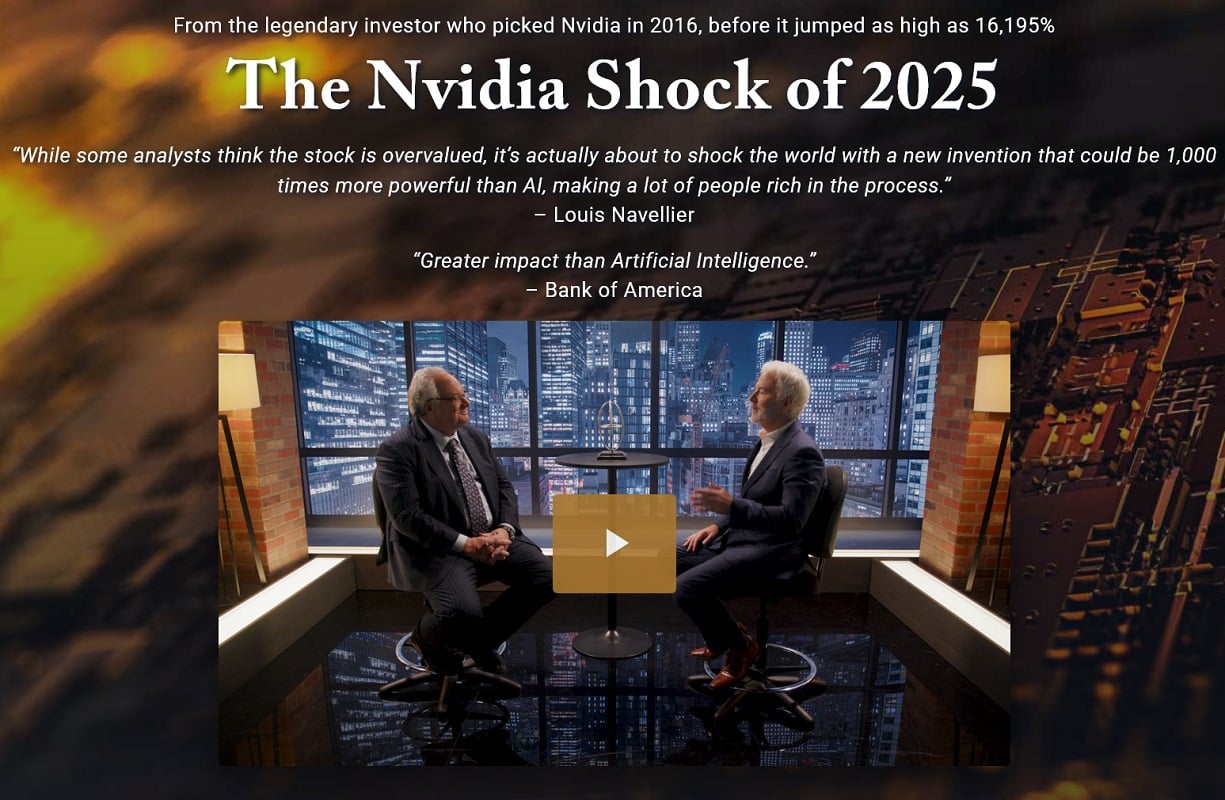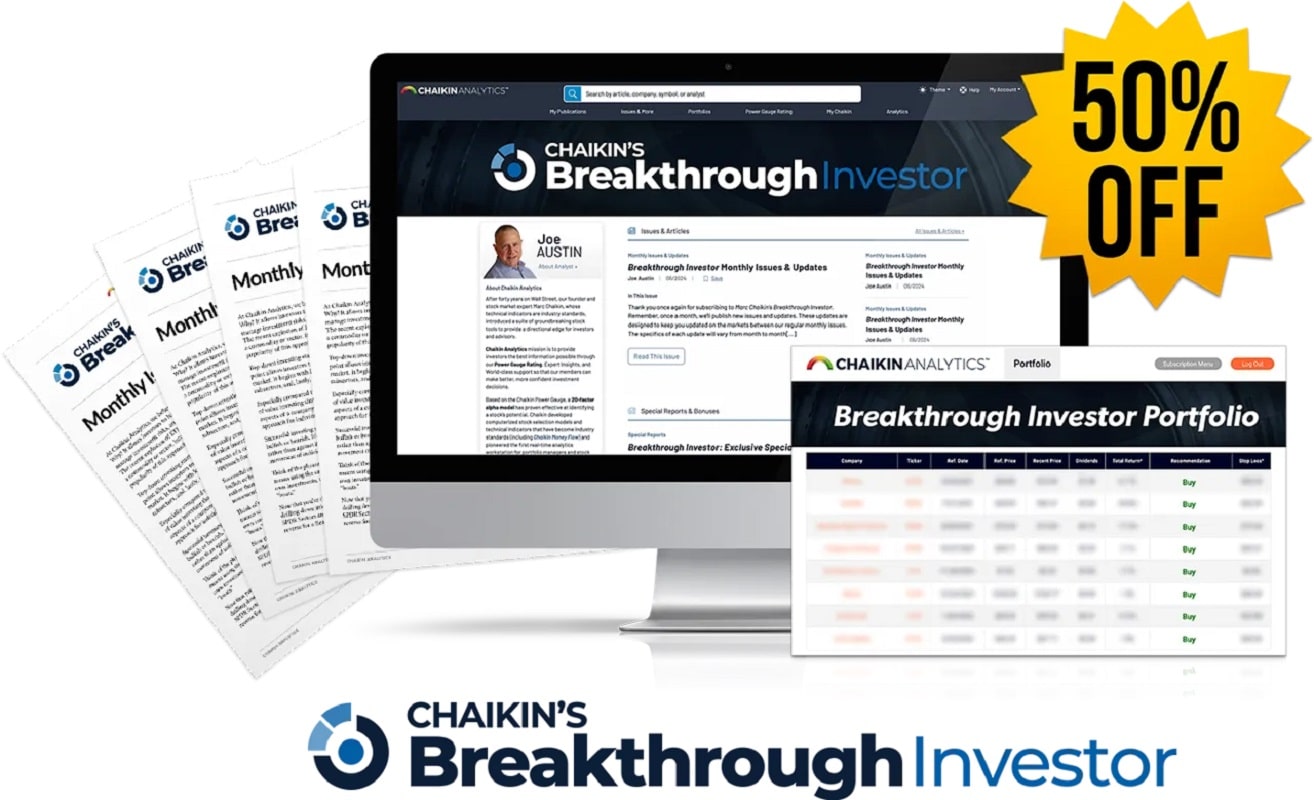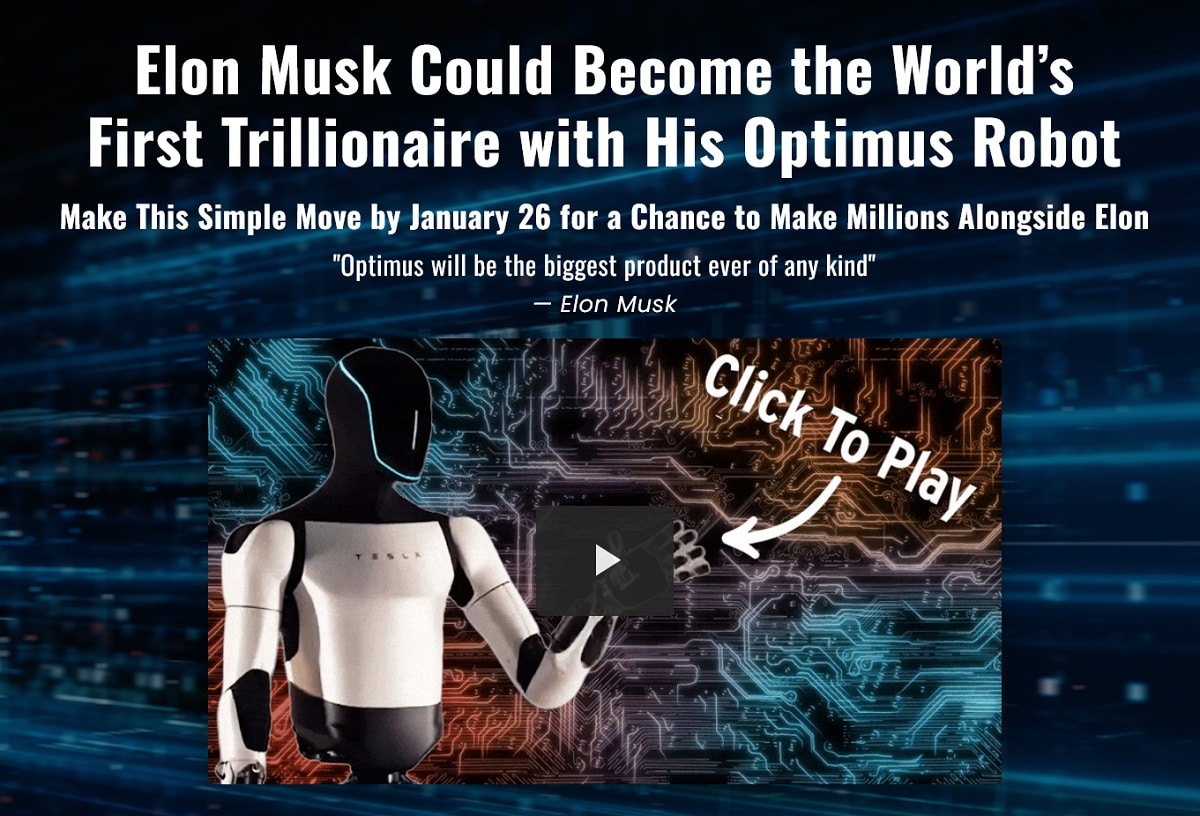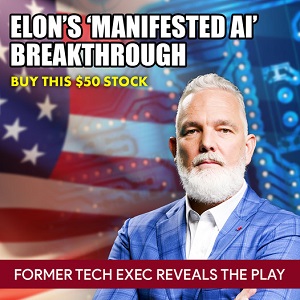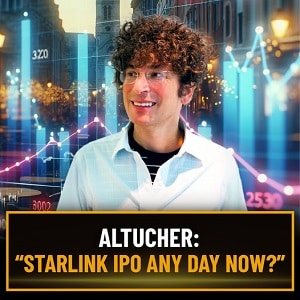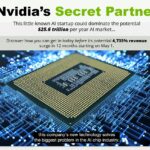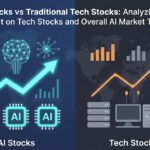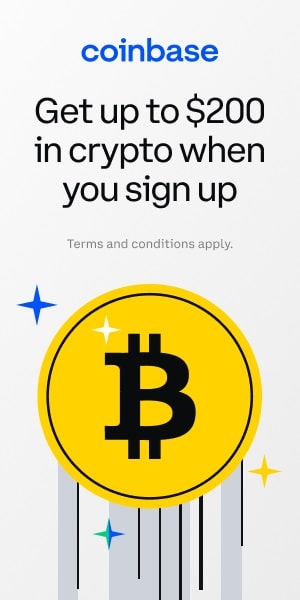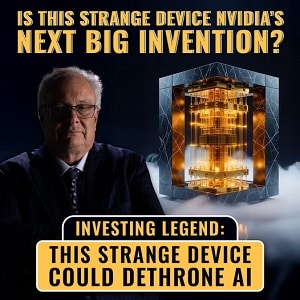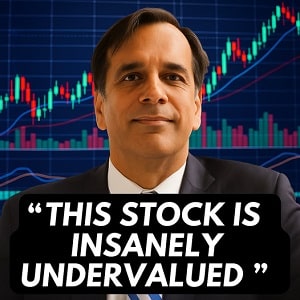In the fast-paced world of investing, few names shine as brightly as Louis Navellier. A legendary investor with a knack for spotting transformative trends, Navellier famously recommended Nvidia in 2016, when it traded at a split-adjusted $1, long before its meteoric rise to a $4 trillion valuation and 16,195% gains. His foresight turned a $5,000 investment into over $800,000 for those who held on, cementing his reputation as a visionary who beat even Warren Buffett’s performance from 1985 to 2000. Now, Navellier is sounding the alarm on what he calls the “Nvidia Shock of 2025,” a new invention he claims could be 1,000 times more powerful than artificial intelligence (AI), poised to create immense wealth for early investors.
This isn’t about Nvidia’s famed GPUs, which sparked the AI revolution, minting 19 billionaires and 600,000 millionaires. Navellier’s focus is on a groundbreaking technology—Quantum Processing Units (QPUs)—and a little-known Nvidia partner at the forefront of this third computing revolution. Backed by heavyweights like Jeff Bezos, Bill Ackman, and Ray Dalio, this company is solving quantum computing’s biggest hurdle, potentially unlocking exponential gains. But is this opportunity as promising as Navellier claims? Let’s explore Navellier’s prediction, the technology behind it, and whether this Nvidia partner is a worthy investment for your portfolio.
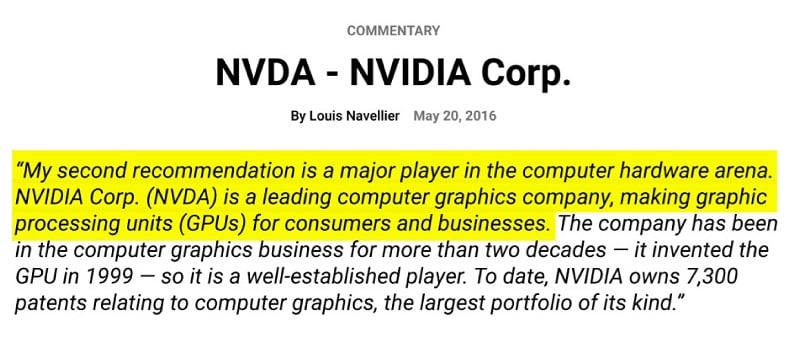
Navellier’s track record speaks for itself. Starting as a math and computer enthusiast, he gained access to a Wells Fargo mainframe in 1977, developing a proprietary algorithm to identify market winners. By crunching data on over 6,000 stocks, his system grades companies based on fundamentals like sales growth, earnings revisions, cash flow, and return on equity, combined with a unique measure of institutional buying pressure—tracking where the “smart money” flows. This approach led to 171 stocks with 1,000%+ gains and 22 with up to 10,000% returns, transforming $5,000 investments into fortunes as high as $4.4 million.
His Growth Investor service, ranked the #1 financial newsletter in 2005, outperformed the S&P 500 by nearly 3-to-1 from 1998 to 2020. Navellier’s ability to predict bubbles—like the dot-com crash in 2000 and the 2007 housing collapse—further solidifies his credibility.
His 2016 Nvidia call, based on its 7,000 AI chip patents, came six years before ChatGPT made AI mainstream, proving his knack for spotting trends early. Now, he’s betting on QPUs, warning that an announcement could ignite a market boom, leaving latecomers behind.

The Nvidia Shock of 2025: What Are QPUs?
Navellier claims Nvidia’s next invention—Quantum Processing Units (QPUs)—could dwarf the AI revolution. Unlike GPUs, which power AI by processing multiple tasks simultaneously (parallelization), QPUs leverage quantum physics principles like superposition and entanglement to process exponentially more data.
Navellier cites a stunning example: a task that would take the world’s most powerful supercomputer billions of years was solved in five minutes using QPU technology, shocking even Elon Musk.
Bank of America compares QPUs to the discovery of fire, predicting a greater impact than AI. VICE News reports quantum computing could be millions of times faster than classical computing, while the Financial Times calls it a “game-changer.”
vidia’s CEO, Jensen Huang, has pivoted the company toward quantum, building a new lab in Boston to accelerate QPU development. Navellier believes this marks the third computing revolution, following CPUs (personal computers) and GPUs (AI), with QPUs set to redefine industries.
To understand QPUs, Navellier offers a simple analogy: a traditional computer solves a puzzle one piece at a time, while a quantum computer tries every piece simultaneously, like waving a magic wand.
This speed enables QPUs to tackle problems AI can’t, such as breaking encryption, developing new drugs, or modeling global weather. Unlike GPUs, which face computational limits, QPUs grow at a double-exponential rate under Neven’s Law, far outpacing Moore’s Law. A $1 investment under exponential growth (doubling daily) reaches $32 in five days; under Neven’s Law, it hits $4,500, illustrating quantum’s explosive potential.
The Third Computing Revolution: A Historical Perspective
Navellier frames QPUs as the third phase of computing, each phase creating massive wealth. The first, in the 1980s-1990s, was driven by CPUs, enabling personal computers and the internet. Companies like Cisco ($1,000 to $940,000), Microsoft ($1,000 to $9.2 million), and Apple ($1,000 to $2.2 million) soared during the dot-com boom as PCs became household staples, driven by Moore’s Law and falling prices.
The second phase, sparked by Nvidia’s 1999 GeForce 256 GPU, revolutionized graphics and, later, AI. Originally designed for gaming (e.g., Microsoft’s Xbox), GPUs excelled at parallelization, making them ideal for training AI models like ChatGPT, which used 10,000 GPUs. This fueled Nvidia’s 16,195% surge and lifted stocks like Palantir (2,450%), SoundHound AI (20x), and TSSI (7,600%), turning $1,000 into $77,000 in two years.
Now, QPUs promise a third revolution. Navellier argues their ability to solve complex problems—unfeasible for CPUs or GPUs—will disrupt industries like pharmaceuticals, energy, and cybersecurity. Quantum computers could develop batteries lasting days, cure diseases like Alzheimer’s, or supercharge AI applications like self-driving cars and humanoid robots. However, this disruption could crash companies like Intel, stuck on CPUs, or cybersecurity firms vulnerable to quantum decryption.
Why Nvidia’s Partner? The Quantum Opportunity
While Nvidia remains a powerhouse, Navellier believes its partner offers greater upside. This company, backed by Jeff Bezos, Sequoia Capital, Bill Ackman ($1 billion), Ray Dalio ($470 million), Ken Griffin ($83 million), David Tepper ($314 million), and Warren Buffett (via a Berkshire subsidiary), has solved a critical quantum challenge: error correction. Quantum computers, operating at the atomic level, are sensitive to temperature, electromagnetic noise, or hardware imperfections, causing errors that scale with power. This partner’s game-changing QPU minimizes these errors, unlocking quantum’s full potential.
Navellier reports this company tested its QPU on a task that would take billions of years for a supercomputer, solving it in five minutes. With an announcement slated for October 28, 2025, Navellier predicts a market surge, as seen when similar updates doubled quantum stocks in a month. The company’s small size—360 times smaller than Nvidia—mirrors Nvidia in 2015, before its 150x run, suggesting massive growth potential.
Smart money is rushing in, with institutional investors betting big. Navellier’s proprietary system, which tracks institutional buying pressure, gives this stock top grades for fundamentals and momentum, signaling a rare opportunity. Unlike Nvidia, now trading at a premium, this partner offers early-stage exposure to quantum’s explosive growth.
Is This Opportunity Any Good?
Navellier’s case is compelling, but is it too good to be true? Let’s evaluate:
Strengths
- Proven Track Record: Navellier’s 2016 Nvidia call and history of 171 stocks with 1,000%+ gains lend credibility. His algorithm, refined over decades, consistently identifies winners like Amazon (100x), Cisco (123x), and Apple (617x).
- Quantum’s Potential: QPUs’ ability to solve intractable problems—evidenced by the five-minute task—positions them to revolutionize industries. Bank of America’s bold comparison to fire underscores their transformative power.
- Smart Money Backing: Investments from Ackman, Dalio, and Buffett signal strong confidence, aligning with Navellier’s system detecting institutional buying.
- Early-Stage Opportunity: With QPUs not yet mainstream, investors can enter before media hype, akin to buying Nvidia at $1. The October 28 announcement could catalyze rapid gains.
- Accessibility: Growth Investor’s $49 subscription (down from $499) and 90-day risk-free trial make it low-risk to explore, with four bonus reports valued at over $499.
Risks
- Volatility: Quantum stocks have delivered gains up to 433% in months, but high rewards come with high risks. Past performance doesn’t guarantee future results, and quantum’s complexity could lead to setbacks.
- Speculative Nature: While Navellier’s partner has made breakthroughs, quantum computing is still developing. Technical or market challenges could delay commercialization.
- Market Timing: Missing the October 28 announcement could reduce gains, as media coverage may drive prices higher, similar to Nvidia post-ChatGPT.
- Disruption Risks: Quantum’s potential to crash non-adaptive companies (e.g., Intel, cybersecurity firms) could cause market turbulence, affecting broader portfolios.
Verdict
Navellier’s Nvidia partner appears to be a high-potential opportunity for risk-tolerant investors. Its error-correcting QPU, institutional backing, and alignment with quantum’s double-exponential growth (Neven’s Law) suggest significant upside. The low entry cost and risk-free trial mitigate downside, making it an attractive bet for those seeking the next Nvidia-like windfall. However, investors must perform due diligence and avoid over-allocating capital, as quantum remains speculative.
Growth Investor: Your Gateway to Quantum Wealth
Navellier’s Growth Investor service is the key to unlocking this opportunity. For $49 (a 90% discount from $499), subscribers get:
- Six monthly issues with one new recommendation and market analysis.
- Featured Report: Nvidia’s Quantum Partner: How to Profit from the Next 150X Tech Breakthrough, revealing the company’s identity and strategy.
- Bonus Report #1: The Quantum Moonshot With 100X Potential, detailing a stock up 300% since April 2024, working with Amazon, Microsoft, and DARPA, with projected 100% CAGR.
- Bonus Report #2: The Amazon of Quantum Computing, covering a cloud-based quantum company serving Google and Mastercard, protected by 200+ patents.
- Bonus Report #3: The Physical AI Revolution: 5 Robotics Innovators Set to Dominate, targeting AI-enhanced robotics stocks.
- Stock Grader: Access to Navellier’s tool, grading 6,000 stocks for fundamentals and institutional buying.
- Weekly Updates and Podcasts: Five-minute market analyses and urgent alerts.
- 90-Day Risk-Free Trial: Full refund if unsatisfied, with all reports kept.
Navellier’s system, which outperformed Buffett and powered Growth Investor’s 3-to-1 S&P 500 beat, is tailored for everyday investors. Subscribers like Karam G., Ken G., and Betty S. praise its life-changing returns, with one turning $12,000 into nearly $700,000 on Nvidia alone.
Why Act Now?
Navellier warns that quantum’s double-exponential growth means delays could be costly. The October 28 announcement could mirror past quantum updates, doubling stocks in weeks. Waiting for media coverage risks missing the 150x potential seen in Nvidia’s AI boom. With smart money already piling in, the window for outsized gains is narrowing.
Conclusion: A Rare Chance at Generational Wealth
Louis Navellier’s Nvidia partner, a quantum computing leader solving error correction, offers a compelling opportunity to ride the third computing revolution. Backed by billionaires and poised for a potential October 28 catalyst, it could replicate Nvidia’s historic gains. While risks exist, Growth Investor’s low cost, comprehensive resources, and risk-free trial make it a no-brainer for investors seeking the next big thing. Don’t miss your chance to join the quantum boom—subscribe today and uncover Navellier’s top pick.
What are Quantum Processing Units (QPUs)?
QPUs are quantum computing chips that use quantum physics principles like superposition and entanglement to process data exponentially faster than traditional computers or AI chips (GPUs). Navellier cites a test where a QPU solved a task in five minutes that would take a supercomputer billions of years, potentially revolutionizing industries like pharmaceuticals, energy, and AI.
Why are QPUs considered more powerful than AI?
QPUs can solve complex problems—like breaking encryption, developing drugs, or modeling weather—that AI and GPUs can’t handle due to computational limits. Bank of America compares their impact to the discovery of fire, and VICE News suggests they could be millions of times faster than classical computing, making them the next phase of the computing revolution.
What is the third computing revolution?
Navellier describes three computing phases:
- First (1980s-1990s): CPUs powered PCs and the internet, boosting stocks like Cisco ($1,000 to $940,000).
- Second (2000s-2020s): GPUs enabled AI, lifting Nvidia (16,195%) and others like Palantir (2,450%).
- Third (now): QPUs, with double-exponential growth (Neven’s Law), promise to solve intractable problems, potentially creating even bigger wealth opportunities.
Why focus on Nvidia’s partner instead of Nvidia itself?
While Nvidia is a leader, its shares are now expensive after a 16,195% run. Navellier believes its smaller partner, 360 times smaller than Nvidia, offers greater upside, similar to Nvidia in 2015. Backed by Jeff Bezos, Bill Ackman ($1 billion), and Ray Dalio ($470 million), this company’s error-correcting QPU positions it as a quantum leader.
What problem does Nvidia’s partner solve in quantum computing?
Quantum computers are sensitive to temperature, electromagnetic noise, or hardware imperfections, causing errors that grow with power. This partner has developed a QPU that minimizes these errors, a breakthrough after 30 years of industry challenges, potentially unlocking quantum’s full potential and driving significant shareholder value.
Why is the October 28, 2025, announcement significant?
Navellier expects Nvidia’s partner to release a major update on its quantum technology around October 28, 2025, which could catalyze a market boom, as seen when previous quantum updates doubled related stocks in a month. Acting before this announcement is critical to capture maximum gains.
What is Neven’s Law, and why does it matter?
Neven’s Law states that quantum technology grows at a double-exponential rate, far surpassing Moore’s Law (doubling chip power every two years). A $1 investment under exponential growth reaches $32 in five days; under Neven’s Law, it hits $4,500, highlighting quantum’s rapid advancement and investment potential.
What are the potential applications of QPUs?
QPUs could:
- Supercharge AI for self-driving cars, humanoid robots, and smarter virtual assistants. These applications could disrupt industries, creating winners and losers in the stock market.
- Predict natural disasters like tornadoes or floods.
- Develop batteries lasting days.
- Discover drugs for diseases like Alzheimer’s or cancer.
What are the risks of investing in this opportunity?
- Volatility: Quantum stocks have seen gains up to 433% in months, but high rewards carry high risks.
- Speculative Nature: Quantum computing is still developing, and technical or market delays could occur.
- Timing: Missing the October 28 announcement could reduce gains as media coverage drives prices higher.
- Disruption: QPUs may crash companies (e.g., Intel, cybersecurity firms) not adapting to quantum, affecting broader markets.
What is Growth Investor, and what does it offer?
Growth Investor is Navellier’s flagship service, using his proprietary algorithm to identify high-potential stocks. For $49/year (down from $499), subscribers get:
- Six monthly issues with one recommendation and market analysis.
- Nvidia’s Quantum Partner report, revealing the company’s identity.
- Bonus reports: The Quantum Moonshot With 100X Potential, The Amazon of Quantum Computing, and The Physical AI Revolution.
- Stock Grader for 6,000 stocks.
- Weekly updates, daily podcasts, and urgent alerts.
- 90-day risk-free trial with a full refund.
What are the bonus reports included with Growth Investor?
- The Quantum Moonshot With 100X Potential: Details a stock up 300% since April 2024, working with Amazon, Microsoft, and DARPA, with 100% CAGR projected.
- The Amazon of Quantum Computing: Covers a cloud-based quantum company serving Google and Mastercard, with 200+ patents.
- The Physical AI Revolution: 5 Robotics Innovators Set to Dominate: Targets five robotics stocks benefiting from quantum-enhanced AI.
Why is the Growth Investor subscription so affordable?
Navellier, from humble beginnings, aims to help everyday investors. Despite charging institutions $30,000/year, he offers Growth Investor at $49/year (90% off) to democratize access to his research, confident that subscribers will see value and stay long-term.
What results have Growth Investor subscribers seen?
Subscribers report transformative gains: one turned $12,000 into $700,000 on Nvidia. From 1997, $5,000 per pick averaged $700,000 in profits, including losers. Testimonials praise Navellier’s life-changing advice, though past performance isn’t a guarantee, and all investments carry risk.
Is it too late to invest in quantum computing?
No, QPUs aren’t mainstream yet, offering an early entry point. Navellier compares it to buying Nvidia in 2016 before AI’s mainstream rise. The October 28 announcement could spark rapid gains, but waiting for media coverage may mean missing the biggest returns.
Why isn’t the media covering QPUs?
Like AI in 2016, QPUs are under the radar. Navellier notes the media is always late, as seen with Nvidia pre-ChatGPT. Jim Cramer has mentioned quantum’s potential, but mainstream silence creates a window for early investors to act before stocks go mainstream.
How does quantum computing enhance AI?
QPUs won’t replace AI but will accelerate it, enabling faster training for applications like self-driving cars and humanoid robots. This synergy could drive broader adoption, boosting quantum and AI-related stocks, as Navellier predicts in his robotics report.
How do I get started with Growth Investor?
Click here to join. For $49, you’ll receive immediate access to all reports, Stock Grader, updates, and a 90-day risk-free trial. Keep all reports even if you request a refund, ensuring zero financial risk.

